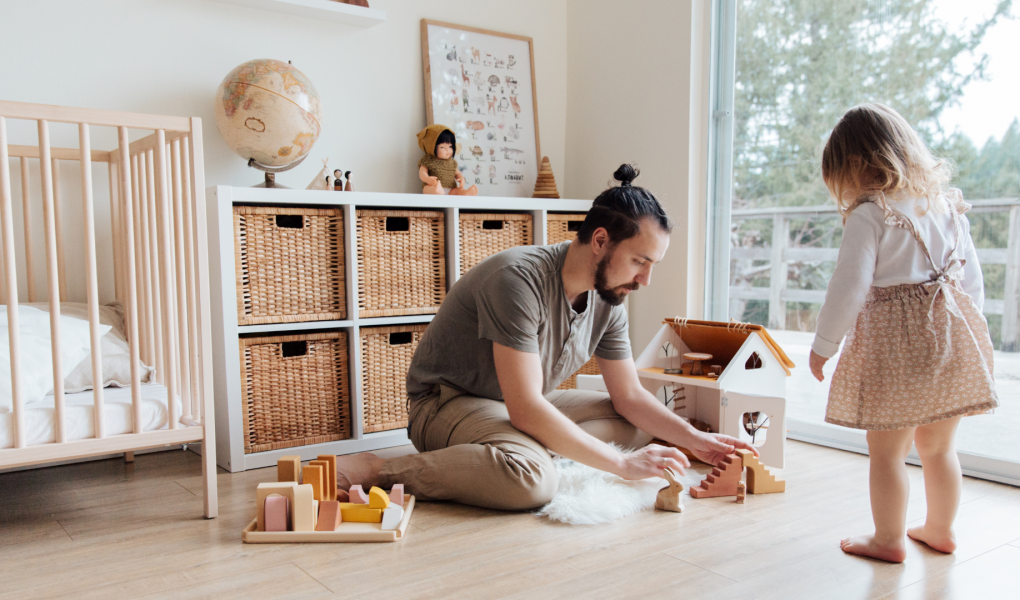Blended families are nothing new. They are becoming increasingly common as couples divorce later in life, have children, then remarry. But while traditional families come in many forms, blended ones are more complex. Children may be raised in a single household, but each household has a separate set of parents and rules. Because of this, blended families also face additional challenges that other family set-ups may not.
Your blended family may or may not be made up of biological parents and children, but either way, you probably have a lot of questions about your new family life. You’ve probably heard conflicting advice about blended families, but we’re here to set the record straight so you can stay happy and healthy as a family.
What Is a Blended Family?
A blended family is when parents get divorced and marry again, or perhaps someone gets remarried, but one of the spouses is still living at home. A blended family can be complicated, and things can get messy. Here are a few tips to navigate life in the unique dynamics of blended families.
Here Are a Few Tips for Blended and Step-Parenting
Becoming a stepparent is an exciting journey, but it can also be challenging. As children share more and more time with their new parent(s), they need to be taught about expectations, responsibilities, and boundaries. Here are eight tips for blended and step-parenting.
- Have fun with the kids. Blended families typically come in different sizes and shapes, but in all of them, blending isn’t easy. You’re bringing two families together, each with its own dynamics and loyalties. If you both want to primarily spend time with your kids, that’s no problem. But if you two want to split your time down the middle, that’s fine, as long as you’re fair with your children. When it comes to birthdays, arrange something for them together. Maybe check out kids entertainment melbourne companies to see about booking a face painter or balloon maker. This will help you connect and have fun with them.
- Share your values. Blended families can be tricky. To maximize or increase the likelihood of a successful blended family union, learn how to share your family’s values. Sharing your values with your stepchildren, especially, can be difficult. It’s not unheard of for stepchildren to feel abandoned and neglected. Parents who withhold their own values from their stepchildren may unintentionally hurt their children in the long run. For example, if you are in a Christian family, then you could consider making a conscious effort to attend church with them, or you could even consider putting them in a Christian school. If you are wondering where you could find such educational institutes, maybe a search for ‘private christian schools near me‘ could lead to some of the best ones. However, keep in mind not to force your values on them and to take things slow when it comes to matters such as these.
- Be an equal parent. It’s important that you think of them as your own. By that, we mean that in order to be an equal parent truly, you must uphold the same parenting standards you held when you were married. Your stepchildren should be treated the same as your own children would, both when showing love as well as disciplining them.
- Talk about the blended family. When a child grows up and becomes an adult, their relationship with their parents somehow changes, and blended families are just a fact of life now. While that’s not necessarily bad, it brings new challenges for many parents. This is especially true if you are a stepparent since the dynamics of your stepchild’s relationship with both of their parents may be different from what you experienced when you were raising your own child.
- Communicate expectations. Blended families can be complicated. You may be used to being the one in control of how your family spends their time-where they go, what they eat, which activities they participate in-but now you’re sharing that schedule with your new partner, former partner, or spouse. And while you may both want the same things for this new dynamic, communicating expectations is an important part of this new relationship. It helps you settle on boundaries and plan things with equal compromise.
- Share your parenting style. Blended families have their own unique set of challenges, and step-parenting adds another layer to the equation. Blended families often have a difficult time (and sometimes conflict) sharing parenting responsibilities, so it is best to show up with your unique parenting style and communicate the same to everyone involved.
- Take an interest in your kids’ hobbies. One of the easiest ways of establishing a good relationship with your stepchildren is to take an interest in whatever it is they are into. For example, if they’re into books, you could do a little research into kids’ books and get them some. If they’re into video games like GTA, Valorant, or Diablo, you could talk about it with them, learn a little about what a faith rune word is or what “press f to pay respects” means, or simply just play with them. Sharing their hobbies and interests makes children feel appreciated, and it’s a good way to bond with them.
- Set limits. With blended and step-parenting families becoming more common, it’s important to set boundaries. Whether you have adopted a blended family or a stepson, stepdaughter, or step-niece, it’s important to establish boundaries that will help you and your children feel safe and secure.
- Expect and support. In a perfect world, blended children would always get along and happily share their life with new parents. But kids have a way of getting what they want, and when those needs conflict with what is expected of them, things get heated. Blended and step-parenting isn’t easy. You need to anticipate this and show up to the relationship accordingly. But you need to keep in mind that you do not let them walk all over you.
Support your blended family members by giving them advice or getting them gifts on occasions. For example, if your child is interested in sports, you could consider getting them rugby or soccer gifts to show them your appreciation. Maybe over time, you can establish a trusted relationship with them, and make it so that they respect the boundaries and rules you set for them as well.
When children are born, their parents are, of course, overjoyed. However, new relationships can form between stepparents and biological parents over time. This can create some confusion, as each child may get different ideas about who is their parent and who is not. This is why blended and stepparent relationships often need extra work to ensure the new family unit works together.




